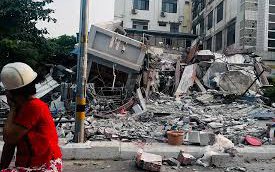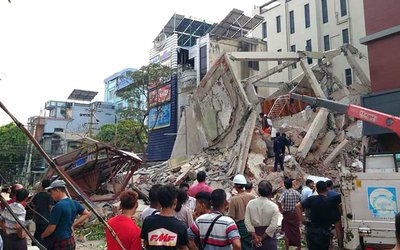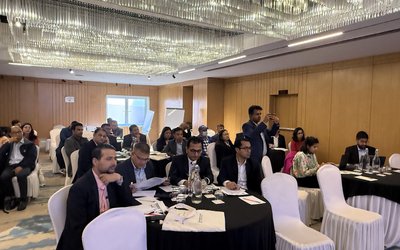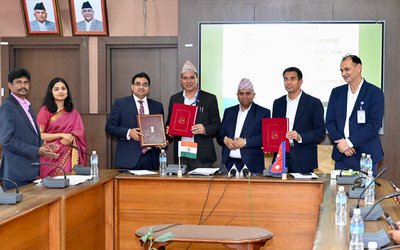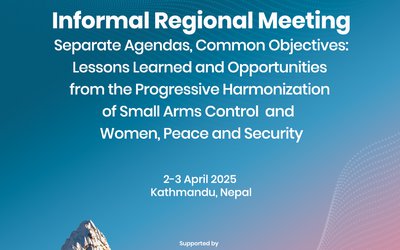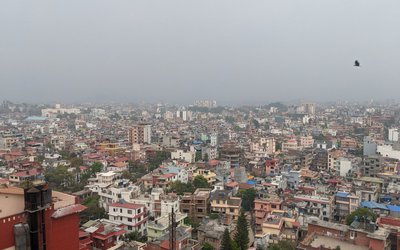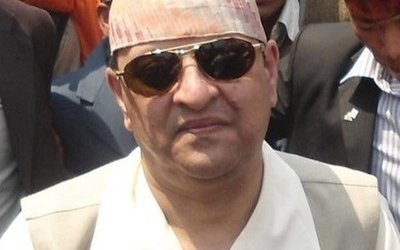
From early in the morning to late evening, the pavilions in the second China South Asia Expo was packed to capacity as traders and buyers from South Asia and South East Asia regions and China were busy settling things during the 5-day fair.
As the theme country of the China South Asia Expo, Nepal had a pavilion full of attractions -- over 100 Nepalese traders had placed their stalls in the pavilion competing with other South Asian countries like India, Bangladesh, Pakistan, Afghanistan and Sri Lanka.
Along with South Asian stalls, there were stalls also from South East Asian countries, namely, Vietnam, Laos, Thailand and Cambodia, and even from Iran. Most of the South Asian countries participating in the expo were eying the Chinese market. Taiwan, South Korea, China and India also had stalls for machinery and high tech items.
With the largest participation of traders from the region, Kunming has shown that it has the potential to be a trade hub or an important part of the old silk-road to connect South Asia and South East Asia with mainland China.
“The second China-South Asia Expo and the 22nd Kunming Fair is not only an economic platform for the participating businesses but also a venue to meet relevant government institutions and business associations of various nations to introduce their own investment policies and environment to promote investment projects so as to foster a sound platform for investment attraction of foreign nations and going overseas of the domestic enterprises,” said Gao Shuxun, deputy Governor of Yunnan Province.
Having strong and good road networks and a modern international airport to link all South Asian and South East Asian countries, Yunnan has a promising future to revive the old links. Yunnan province was the gateway to China in the past as traders from South and South East Asia traded to China through this route over a long time.
The expo brought the participation of 46 countries and 24 domestic provinces and municipalities of China. There were 10 indoor pavilions, including the pavilion of the theme country, Nepal. With the participation of over 100 Nepali traders, Nepal’s pavilion drew a large number of visitors.
“We have basically reached the goal of 3 expansions set by Yunnan Provincial Government, which are expansion from commodities trade to service trade, from import and export trade to overseas investment and from offline transactions,” said Gao Shuxun, deputy Governor of Yunnan Province.
Inaugurated by Wang Yong, Vice Premier of the People's Republic of China, the high level delegations from South Asian Countries including prime minister of Nepal Sushil Koirala and prime minister of Bangladesh Shekh Hashina addressed the participants at the two hours of inaugural program.
“Chinese government gives high priority to its trade promotion to South Asia and South East Asian countries. We want to revive old silk road through this expo,” said Wang Yong, Chinese Vice premier.
To make it more South Asian, the organizers also invited Secretary General of South Asian Association of Regional Cooperation (SAARC) Arjun Bahadur Thapa as a guest to address the opening ceremony indicating that China gives a high priority to the region.
“As an observer of SAARC, China can contribute to foster the relations in South Asia. China is actively involved in various activities of SAARC,” said Secretary General Thapa addressing the opening session.
Out of eight member countries, China shares its borders with Nepal, Bhutan, India, Pakistan and Afghanistan. “China and South Asian countries can reap enough benefits from this kind of expo,” said Chinese vice premier Wang Yong.
Unlike other fairs, Kunming Expo has its own importance and is different from others. “Based on the principle of mutual benefits between the governments and enterprises and combination public benefits and market, we have actively promoted expo to the enterprises and explore model for market driven enterprises making remarkable achievements,” said Li Jiheng governor of Kunming.
Governor Li also held the view that his province felt pride to have such a high level delegation from region to share their experiences and exchange products with the countries of the region.
Nepal’s Role
Giving high value to friendship with Nepal, Chinese government sent a special aircraft for the visit for Nepalese prime minister Sushil Koirala who led a high-level delegation which included the representatives from major political parties, Minister and Trade and Commerce Sunil Bahadur Thapa and high level government officials.
Expressing views about his visit, prime minister Sushil Koirala said, “I am especially pleased to visit Kunming- a historic ‘City of Eternal Spring’, to join you in the Second China-South Asia Expositionand the Twenty-second China Kunming Import and Export Commodities Fair. My delegation wishes to express sincere gratitude to the Government of the People’s Republic of China for designating Nepal, as the ‘theme country’ of this year Expo. Given our vast natural resource base, dynamic, talented and hardworking population, entrepreneurship, China and South Asian economies can make best use of their complementarities and forge effective partnership in their development endeavors. I am confident that this Expo provides an effective platform."
He said: “I am confident that China as an observer in the SAARC will bring new dynamism in South Asian economies. It is our sincere expectation that Nepal will greatly benefit from unprecedented economic transformation that is taking place in our neighborhood."
Participating in Kunming Expo was also a great opportunity for Nepalese traders, particularly handicrafts producers who are facing a difficult situation due to economic recession in western Europe.
As China has become the second largest source of foreign investment and second largest trading partner with huge trade deficit on Nepal's side, the expo also helped Nepal to explore markets for Nepalese products and to increase bilateral trade.
Despite concessional fair provided by Chinese government to bring the goods via air cargo, Nepalese products are still more expensive than products from India, Bangladesh and Sri Lanka. "Had there been road connectivity, Nepalese products would have found good market,” said Niraj Raj, a businessman who established a stall in the expo. “Nepalese handicrafts products are still in high demand in China."
Along with the government delegation, there were a significant number of representatives from Federation of Nepalese Chamber of Commerce and Industry, Nepalese traders. "Although there were more Nepalese stalls here this time than last year, we were able to sell more goods this year,” said Nepalese trader Rajendra Shakya.
China introduced the Expo last year aiming to boost its trade with South Asian countries to another level from the current volume of over 100 billion US$. Currently India is China’s largest trade partner. Nepal is the smallest trade partner with 1.5 billion dollars of bilateral trade.
As a theme country, Nepal found an occasion in the expo to reinforce its cultural diversity and development achievements, bolster Nepal’s knowledge of Chinese market and help attract more Chinese investment. For any South Asian state willing to do business with China, the Expo is a perfect opportunity to start and consolidate its position in China.
The Nepali Pavilion displayed Nepali export products and disseminated information on Nepali products, culture and tourism. Altogether 100 stalls from Nepal exhibited Nepali handicrafts in the Expo and a Nepali cultural group also performed a cultural program during the Expo.
As Nepal has assumed the Rotating Presidency for the 9th China South Asia Business Forum, FNCCI also led a separate delegation comprising prominent entrepreneurs from Nepal. Along with high level trade delegation, the organizers also invited the journalists from the region including Nepal, India, Bangladesh, Pakistan, Sri Lanka, Cambodian, Thailand, Laos and Myanmar. This made the expo a melting pot for South Asia and South East Asia.
The Second China South Asia Exposition is jointly organized by the Provincial government of Yunnan province and Ministry of Commerce of the People’s Republic of China. Organized under the theme of expanding trade in services, boosting investment-centered cooperation, accelerating inter-connectivity and jointly constructing economic corridor, the exposition aimed to promote all round cooperation and development between China and South Asia. Some 46 countries and regions from South Asia and South East Asia had confirmed their participation in the Expo, according to the organizers.
Since the establishment of bilateral relationship, China has always given a high priority to Nepal and China has helped Nepal to make it more independent and self reliant. By making Nepal as a theme country in the largest trade fair, China provided immense opportunity for Nepal to explore the market in China.
Binod Chaudhary
Man to Reckon With
Although Nepalese side had a significant presence in the expo, eminent Nepalese businessman and Forbes billionaire Binod Chaudhary, in his address to the expo, made his presence felt by calling all South Asian leaders to grab the opportunity.
Invited by expo organizing committee to address the opening session, Chairman of Chaudhary Group Binond Kumar Chaudhary spoke of the, “Unique opportunity for Nepal to bring Indian, Chinese and Nepalese private sector and government to promote major infra projects as a real PPP model.”
“It is necessary to revive the silk road to rejuvenate South Asian economy,” said Chaudhary, addressing the China-South Asia Business Forum on the theme of China-South Asia investment and trade cooperation where foreign state leaders, senior officials, elites of business associations and scholars delivered keynote speeches.
Chaudhary was invited by the organizer the forum as a prominent business leader.
“Going to Kunming at the Chinese government's invitation, I found Kunming the true South Asian economic melting pot and the new hub for South Asia's partnerships,” tweeted Binod Chaudhari.
Nepal Journalists Delegation
Along with covering Kunming Expo, the fifteen member Nepalese delegation also visited various parts of Yunnan Province. Led by president of Nepal China Media Forum Kishore Shrestha, the delegation interacted with local media particularly China News Service Yunnan branch and Information Department of Communist Party of China Yunnan Province.
Along with participating in the inaugural and closing of Expo, Nepalese media delegation, which included senior government officials from Ministry of Information and Communications and senior officials from Press Council Nepal, also visited customs check points at China-Vietnam border.

Keshab Poudel
Poudel is the editor of New Spotlight Magazine.
- FM Dr. Deuba’s India Visit: Mission Aborted
- Mar 26, 2025
- AMBASSADOR MAEDA TORU: Warm Regards
- Mar 24, 2025
- PRO-MONARCHY MOVEMENT: Rising Dissatisfaction
- Mar 23, 2025
- Dr. PRABIN MANANDHAR: Person With Humility
- Mar 16, 2025
- US SUSPESION OF GRANT: Impact On Nepal
- Mar 10, 2025
